Discover the Ancient Art of Tarquinia’s Etruscan Tomb Murals
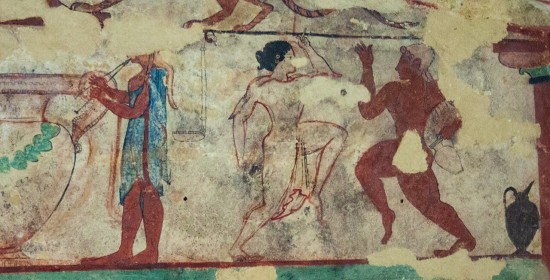
Buongiorno and welcome to Stefano Rome Tours, Rome’s leading tour company for private tours in Italy and Civitavecchia shore excursions. One of our most popular Rome Countryside Tours is the Etruscan Mystery Tour which includes a visit to Tarquinia to explore the unique-in-the-world ancient underground tombs that boast ancient Etruscan tomb murals more than 2,500 years old.
Located approximately 1.5 hours (90 km) northwest of Rome and a mere 20 minutes (22 km) from Civitavecchia, Tarquinia stands as the ideal destination to unravel the mysteries of one of Italy's most captivating ancient civilizations and the treasures they left behind in their nearby necropolis.
The Monterozzi Necropolis, situated on the Monterozzi hill in Tarquinia, is an extensive burial ground dating back from the 7th to 2nd centuries BCE, offering a profound glimpse into Etruscan life. Comprising over 6,000 tombs, most with chambers carved into the rock, it stands as a testament to the rich and uninterrupted pictorial tradition of Tarquinia.
The site is renowned for its approximately 200 painted tombs (out of which about a dozen are preserved and open for visitors to view), depicting scenes of athletes, hunters, banquets, and mystical themes. The Necropolis provides a unique sociological insight into Etruscan life and holds immense historical and artistic significance, It has been recognized as a UNESCO World Heritage Site since 2004.
Visitors can access each tomb by descending a flight of stairs and viewing the interior through a window in a sealed door, revealing the mysteries of one of Italy's captivating ancient civilizations. Join us in this travel blog as we venture into the depths of Tarquinia's underground tombs. Discover hidden meanings behind mesmerizing murals, explore artistic techniques, delve into recurring themes, and unveil the cultural significance echoing through the corridors of time.
Tarquinia's Cryptic Canvas:
Deciphering Etruscan Tomb Murals
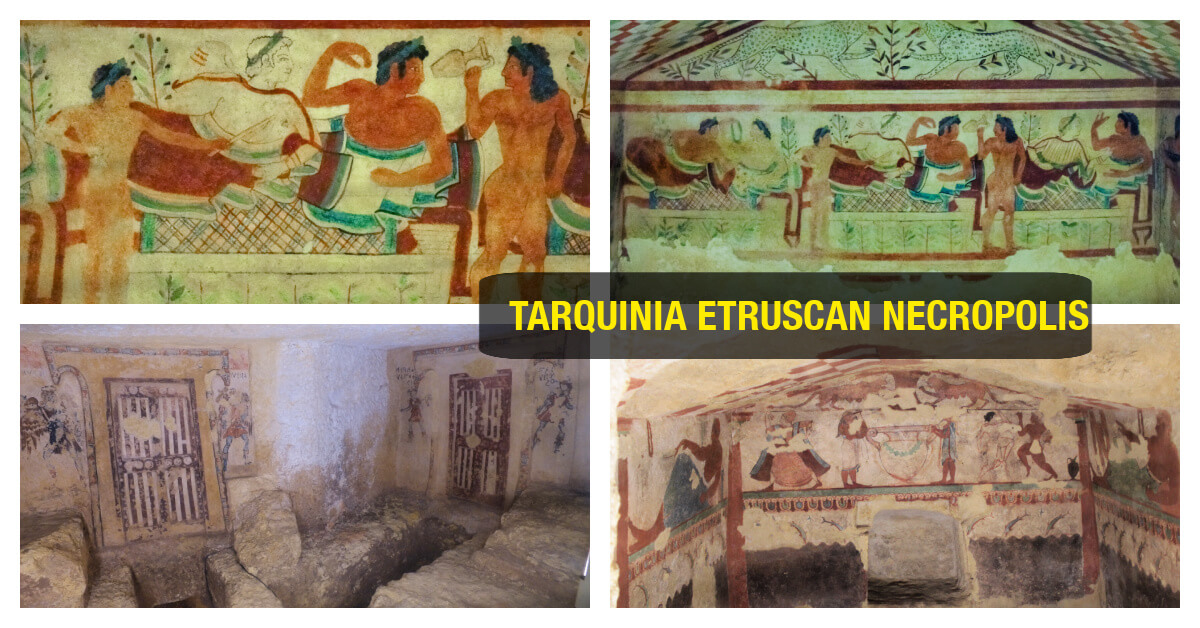
Ancient Artistic Techniques of Etruscan Tomb Murals
The Etruscan tomb murals not only represent a triumph of artistic prowess but also serve as a fascinating glimpse into revolutionary techniques employed by these ancient craftsmen. The application of fresco painting, a method where pigments were meticulously applied to wet plaster, allowed for the creation of vibrant and enduring colors.
The palette, derived from organic materials, encompassed chalk or kaolin for white, a vegetable mix for black, malachite for green, and iron oxides for red, ochre, and yellow. Blue, a rare pigment, possibly imported, hinted at the Etruscans' cosmopolitan connections. The artists' meticulous attention to detail in facial expressions, clothing, and architectural elements showcased not only their technical proficiency but also their advanced understanding of artistry.
This innovative approach allowed artists to breathe life into their scenes, infusing them with a captivating sense of movement and vitality. The mastery extended to their rendering of facial expressions, clothing, and architectural details, showcasing an advanced understanding of artistry.
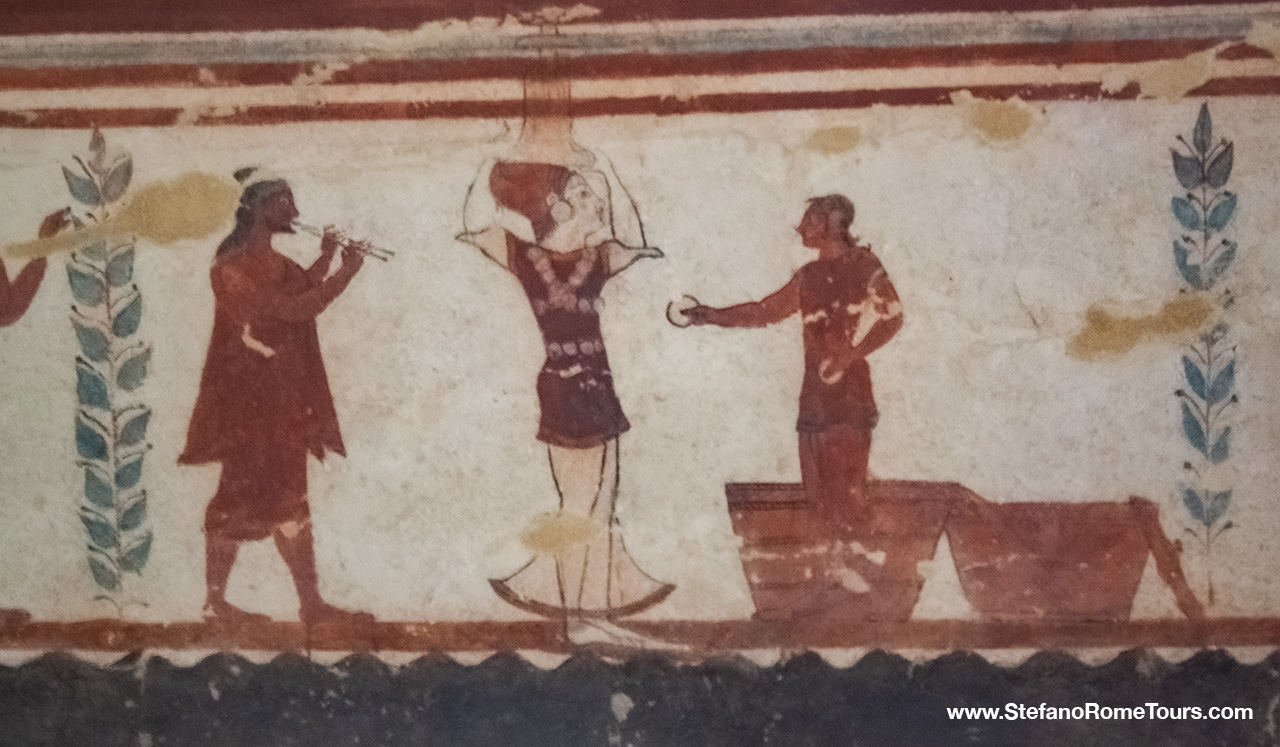
Recurring Themes in Ancient Etruscan Tomb Murals
From rectangular rock-cut chambers replicating real houses to elaborate depictions of diners, drinkers, and mythical creatures, these tombs offer an immersive exploration of Etruscan life, rituals, and beliefs.
The evolution of Etruscan tomb art reveals distinct thematic shifts. Starting in the mid-6th century BCE, tombs featured heraldic figures, influenced by Phoenician and Near Eastern motifs, acting as protective guardians. As centuries progressed, elite tombs displayed more intricate scenes, dividing spaces for specific decorations.
The central areas showcased vibrant depictions from mythology, religious ceremonies, and Etruscan daily life—featuring banquets, dancing, hunting, and sporting events. Notably, the artwork focused less on death and burial and more on celebrating the joys of living. Scenes of luxurious feasting, musicians, and iconic Greek influences reflect the Etruscans' social status and cultural dynamism.
The painted banquets remain mysterious, sparking debates on their symbolic meaning—memories of joyous moments, funeral feasts, or glimpses into an eternal afterlife. Architectural elements like doors and columns served as metaphors for passage into the next life, enriching the narrative of Etruscan beliefs.
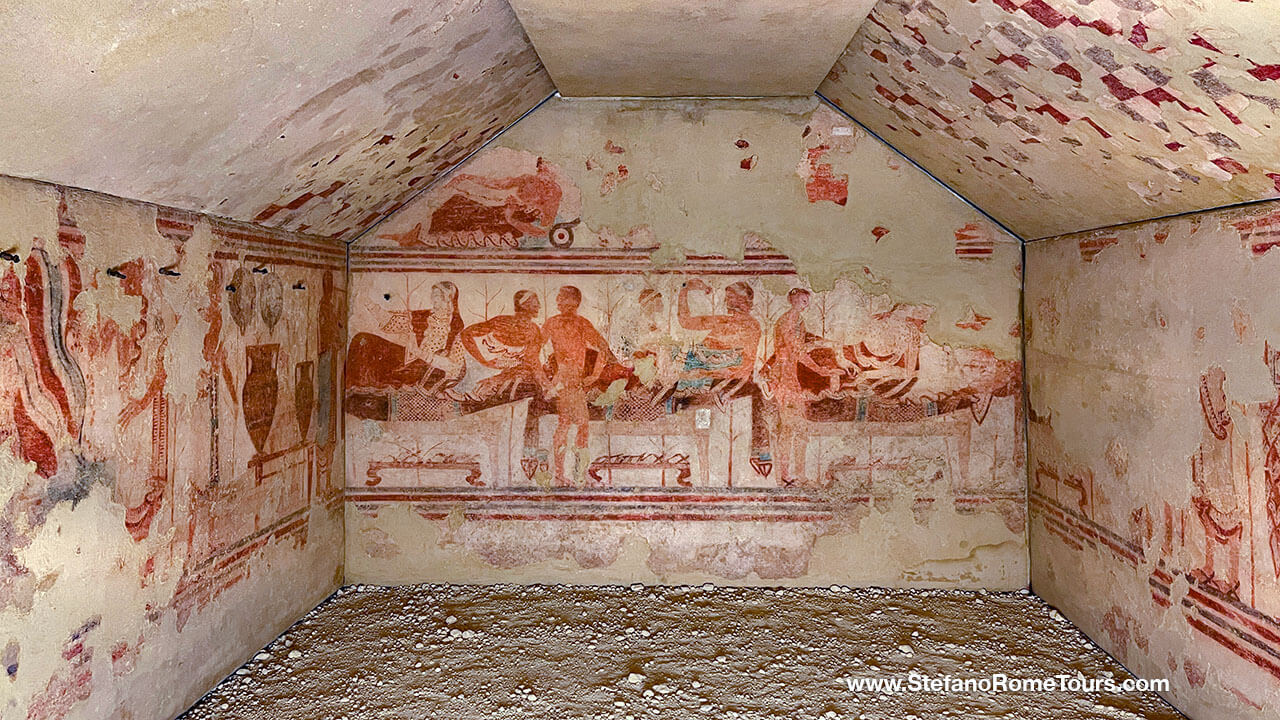
Festive Farewells: Ritual Banquets in Etruscan Tomb Paintings
Contrary to somber funeral traditions that we are accustomed to, the Etruscans embraced a festive approach to bidding farewell to their departed loved ones. Central to these lively funeral rites was the concept of sharing a final meal with the deceased as they embarked on their journey to the afterlife.
The ritual banquet was not only a social ceremony but a ritual that incorporated the spirit of the departed. As part of this ritual, specific dishes and utensils used during the feast were ritually placed in the tomb, ensuring a symbolic communion between the living and the deceased.
Beyond its spiritual significance, the funeral feast had profound social implications. It served as a poignant marker of the socio-economic status of the departed and their family. By hosting elaborate banquets, funerary games, and showcasing various activities, the community was reminded of the importance and standing of the deceased individuals.
Another remarkable example is the Tomb of the Leopards (480-479 BC) which portrays a banquet with three couples lying on klinai, accompanied by servants bringing drinks. Flute and lyre players, dancers, and a procession of young men add to the lively scene.

The Tomb of the Jugglers from the late 6th century BC, celebrates games and dances in honor of the deceased, offering a glimpse into the joyous moments that characterized Etruscan celebrations.
Another notable example is the Tomb of the Bacchants, dating back to the late 6th century BC, which displays depictions of drunken dancers and musicians crowned with vine shoots, separated by small trees.
The Tomb of the Lionesses (530-520 BC), discovered in 1874, features two male couples of banqueters lying on cushions, while dancers and musicians entertain the guests near a large metal crater containing wine.

These festivities became a tangible means of reinforcing the social position of the departed and their family in the contemporary Etruscan society. Such celebrations often included visual representations of socio-political achievements, highlighting the wealth and civic contributions, including any public offices held by the deceased. Thus, the Etruscan funeral banquet was not only a farewell to the departed but a vibrant affirmation of their impact on the community.
Everyday Scenes of Etruscan Tomb Murals
Etruscan tomb murals stand out for their vibrant depictions of everyday life, emphasizing the continuity between the living and the departed. Besides scenes with banquets and dances, some tomb paintings include activities the deceased may have once enjoyed.
One striking example is the Tomb of Hunting and Fishing, dating back to the last two decades of the 6th century BC, where two axial chambers showcase hunters on horseback returning from a hunting trip and scenes of hunting and fishing in a marine landscape.
Another noteworthy tomb is the Tomb of the Hunting Lodge, from the late 6th century BC. This single quadrangular chamber resembles a tent or pavilion used during hunting trips, adorned with scenes of banquets, dances, and hunting activities.
The Tomb of the Ship from the mid-5th century BC (showcased inside the Etruscan Museum in Tarquinia) depicts banqueters reclining on richly decorated klinai, as well as a ship - emphasizing the Etruscans' engagement with maritime activities. These tombs serve as vivid time capsules, capturing the essence of Etruscan life.
The Tomb of the Deer Hunt, from the mid-5th century BC, features scenes of banquets and dances set outdoors among small trees, capturing the Etruscans' appreciation for the outdoors and their connection to nature.
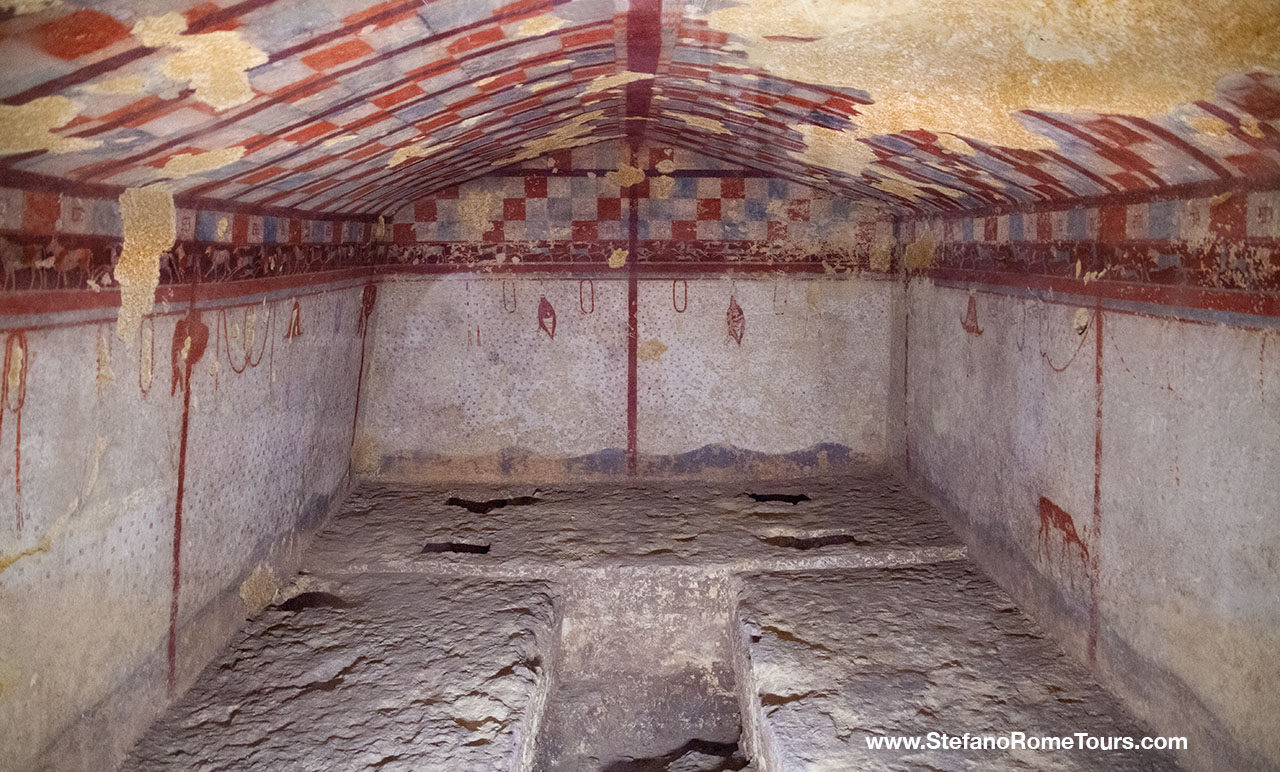
Journey to the Underworld: A Profound Motif in Etruscan Tomb Murals
A striking and recurrent motif in Etruscan tomb murals is the vivid portrayal of the deceased embarking on a journey to the underworld, a testament to the complex beliefs surrounding the continuity of existence.
These somber depictions became more prevalent towards the end of the Etruscan civilization, coinciding with the systematic conquest of their city-states by the expanding Romans. The increasing representation of a bleak future in their tomb art reflects the challenges and uncertainties faced by the Etruscans during this tumultuous period.
Tomb of the Blue Demons:
This 5th-century BC tomb unveils a compelling fresco narrative. Charon, the ferryman of the dead, steers a boat while demons, some threatening and others restraining. The fresco symbolizes the perilous journey to the afterlife, with "demons" guiding the deceased woman to the ship, marking the boundary between the world of the living and the afterworld. The banquet scene on the rear wall captures both the living's funeral festivities and the merriment of the deceased in the afterlife.
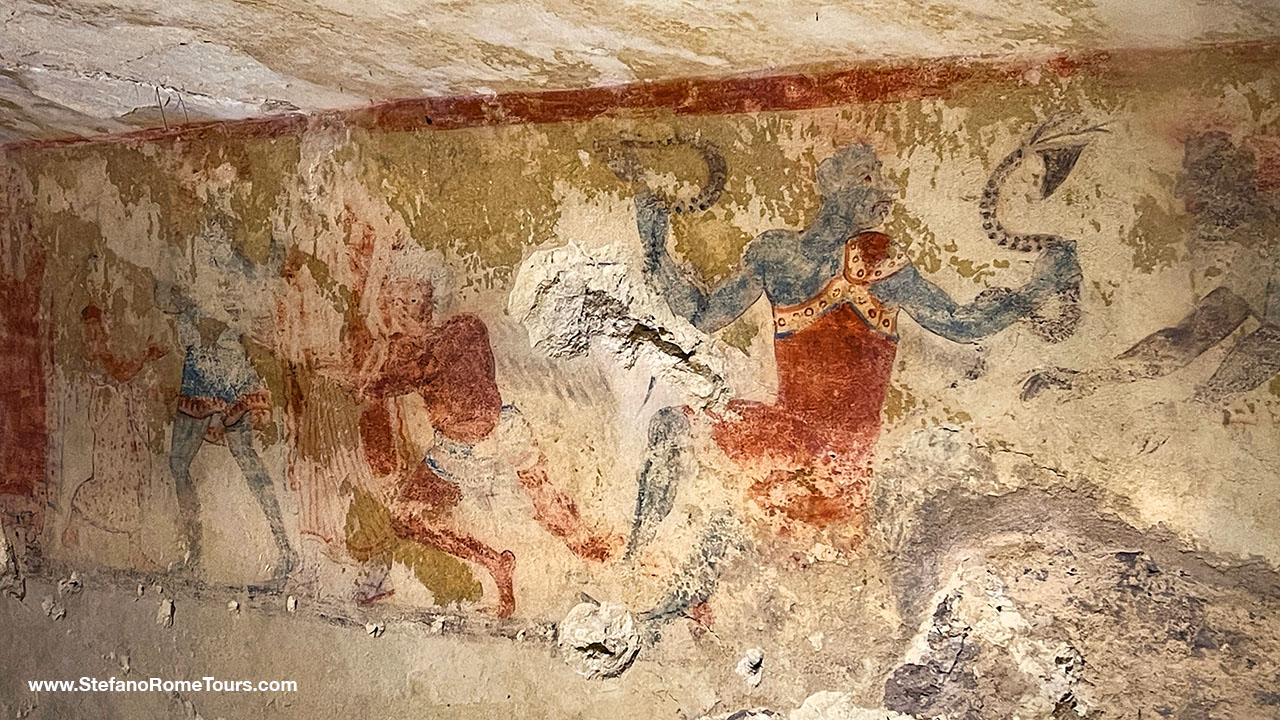
Tomb of Charuns:
Dating back to the first half of the 3rd century BC, this Hellenistic-period tomb features a two-level structure with a vestibule and chambers, where cult ceremonies and interment took place.
The walls of the upper chamber showcase false doors flanked by depictions of Charun, an Etruscan winged guardian of the afterlife, tasked with guiding souls to the Underworld. The false doors are symbolic of the passage between this world and the afterworld. The tomb reflects the intricate belief system surrounding the transition from life to the afterlife.

Tomb of the Two Roofs:
Dating to the first half of the 2nd century BC, this tomb presents a central pillar adorned with Charun sitting on a rock standing before the "doorway" into the afterlife or Hades. The scene portrays a farewell to the departed, while family members who have passed on await the arrival of their loved one, alongside the figure of Vanth - a female deity of death. Pseudo-sarcophagi with inscriptions line the side walls, and a miniature frieze on the right wall vividly illustrates the deceased's journey to the afterworld.
These tombs not only serve as historical artifacts but also as visual chronicles of the Etruscan worldview, where the journey to the afterlife was a profound and complex narrative depicted with artistic finesse.

Etruscan Tomb Murals: The Lasting Impression of Etruscan Civilization
The frescoes inside the tombs provide a distinctive glimpse into Etruscan culture, offering invaluable insights into their beliefs, social structure, and daily life. They unveil details about various aspects such as the Etruscans' appearance, the musical instruments they played, the games they engaged in, and more.
The emphasis on afterlife banquets and celebrations hints at a society that valued communal bonds and the continuity of familial relationships. The vivid depictions of clothing, hairstyles, and accessories also shed light on the Etruscans' fashion sensibilities and societal hierarchies.
Tarquinia's cryptic canvas of Etruscan tomb murals is a testament to the richness of this ancient civilization. Through meticulous artistic techniques, recurring themes of afterlife journeys, and depictions of everyday scenes, the Etruscans left behind a visual legacy that transcends time.
As we decipher the hidden meanings within these frescoes, we not only unravel the mysteries of a bygone era but also gain a profound understanding of a people who saw death not as an end but as a continuation of life's vibrant tapestry.
You too can embark on a captivating journey through the mysterious world of the Etruscans by booking our Etruscan Mystery Tour from Rome and Civitavecchia. Step into history and witness their ancient painted tombs firsthand. Immerse yourself in the mysteries of this ancient civilization, exploring the captivating narratives carefully preserved within the timeless crypts of Tarquinia.
